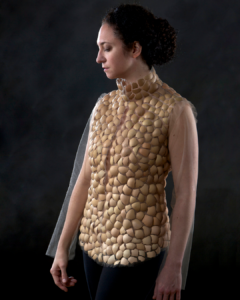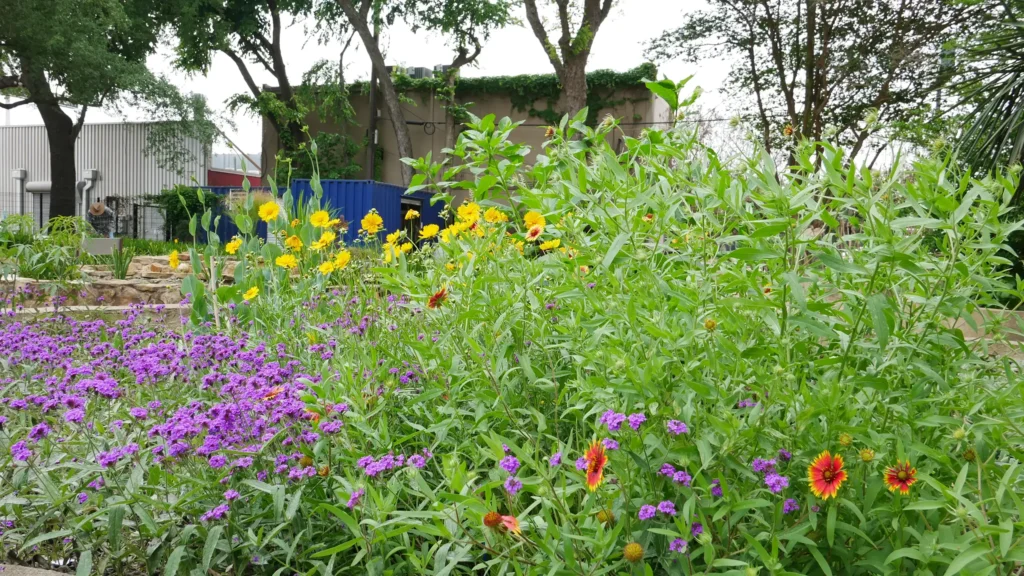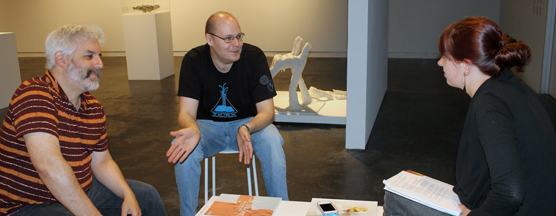
As an educational component of the current exhibition, Ctrl + P, HCCC is hosting a working FDM-based (Fusion Deposition Modeling) 3D printer on loan from TX/RX Labs, a nonprofit hackerspace in Houston. The printer continuously prints plastic manifestations of digital creations during viewing hours. This is the first of many 3D printers that TX/RX Labs is creating and donating to schools in the Houston area as part of its SchoolBOT project, which seeks to increase science and technology interest among children and adults. HCCC’s Ashley Powell asked TX/RX’s Roland Von Kurnatowski III about their cutting-edge organization.
Tell us about your organization… What is TX/RX? How long have you been involved?
TX/RX is a 501(c)(3) non-profit that fulfills three roles:
- Education of adults and children in science and technology in order to increase interest and awareness.
- Provide space for collaboration among our diverse population of engineers, educators, and crafters.
- Perform outreach activities to promote science and technology awareness and literacy.
- We have a 16,000-square-foot facility located downtown, where we teach and work.
I have been with TX/RX for about 2.5 years, after joining the group to start work on building a CNC router. I currently am the executive VP. To some degree, TX/RX might be best described as your parents’ garage for the modern age. Gone are the days of working with the tools our parents had in their garage—now, we need things like laser cutters and CNC routers and 3D printers to do cutting-edge efficient work. TX/RX provides this, along with the training and help to let DIY-ers, crafters, and ardists flourish.
As part of Ctrl + P, we have one of the 3D printers you and your team designed and developed, and many visitors have seen it in action. For our readers, could you please describe how this machine works?
The machine has two sections, a computer-controlled motion system that moves the tool and an extruder that functions as the tool with which you build objects. The extruder turns plastic filament into a very fine thread that is laid down, layer by layer, to build three-dimensional objects. These objects, hence, consist of layer upon layer of plastic filament, stacked upon each other. To achieve this, a piece of computer software called a slicer turns a 3D model of an object into a series of tool moves to generate the object. This code is then sent to the printer, which produces the object.
We know this machine is the result of a huge team effort that took a long time to develop, but we’re curious to know, how did you arrive at this design? This machine is different from other 3D printers we’ve seen. How does it differ and what are the benefits to it having a circular build plate?
We looked to make the machine as easy to use as possible, so that it could be an educational tool for students. All of our design choices were made to reach this goal. It differs in that it is a delta arm design vs. a traditional xyz-style robot. It has auto-calibration features. The circular build plate is a result of the kinematics of the delta design. In general, the choices were set to yield low cost, reliability, and ease of use, so that it could be given to schools at minimal cost and require little-to-no overhead in terms of maintenance and training. All of these are things that current printers lack.
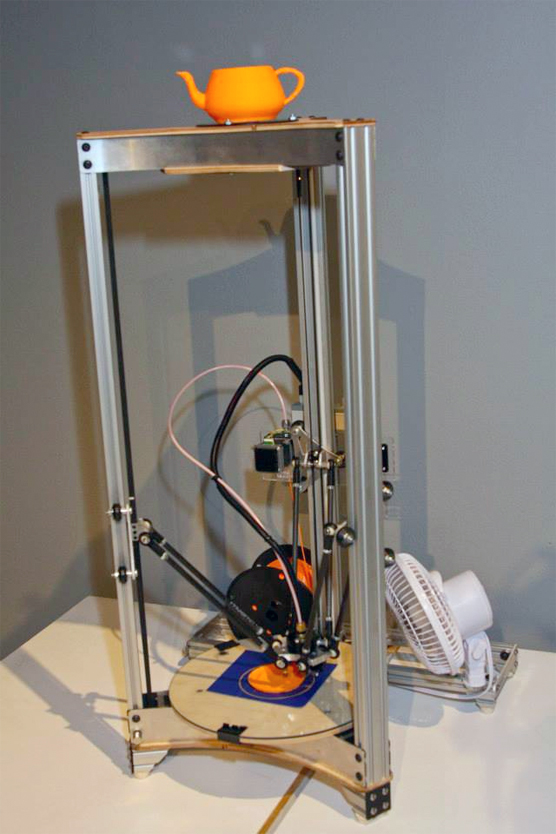
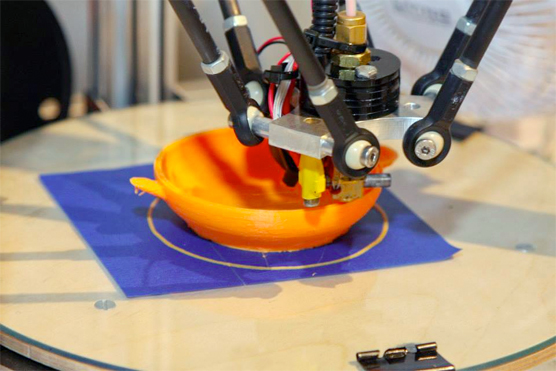
Everyone is talking/asking/wondering about the future of 3D printing, but we’re interested in your thoughts on the current state of 3D printing. How do you see people using this technology today? What are some of the most interesting things you’ve seen people making?
3D printing will continue to grow in industry and design; we hope also it will expand rapidly in the educational sphere. We think this is the area that offers the most growth potential. Some of the most interesting things we have seen are 3D-printed human organs and prosthetics. This is one area where the customization and advances seem to have a major impact, not just in terms of speed and cost but in terms of customization.
The printer we have in Ctrl + P is the first prototype of the schoolBOT. Could you tell us about your plans to introduce this machine to schools across Houston?
We are currently pursuing grants and private funding to create 50 printers to donate to local talented high-school teachers to act as a pilot program to generate course modules for the printer. After that pilot program, we will open the printer to the general educational market.
What is the youngest age group you’ve shown the 3D printer to? How did they react to it?
We have done a number of events with fifth-eighth graders. They always are fascinated and want to start off by printing Pikachu (the Pokemon character).
What is the significance of the teapot design the printer is currently making in our gallery?
It is the Utah Teapot, which is one of the first 3D-rendered objects–part of the computer graphics revolution. We thought this is part of the 3D printing revolution, so we wanted to continue this tradition by printing it as one of our first objects.
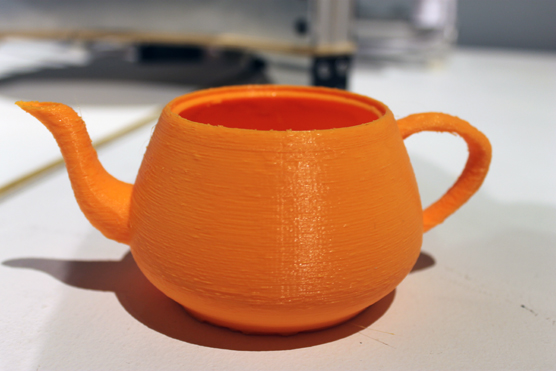
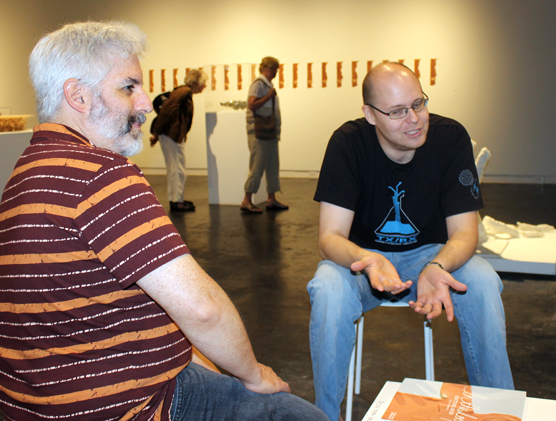
Do you design any of the programs used for the 3D printer? Are you using programs for 3D modeling, such as Rhino, Z brush, or Mudbox? Or are you purely using CADD files?
We use input files that can come from any software. Rhino, Z brush, Mudbox, etc. can all output files the 3D-printer software can print. We use a program called Slic3r to do the conversion from these files to files our printer can run. Slic3r is open source as well.
Any advice for people interested in learning more or who are about to dive into the world of 3D printing?
Come hang out with us at TX/RX Labs—we are always excited to discuss and work with individuals on 3D-printing projects.
